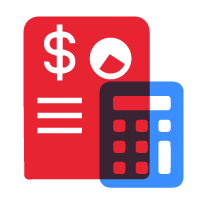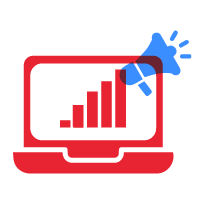Many companies face a familiar dilemma: how to accelerate sales without overspending on recruitment, training, or internal infrastructure. Increased client expectations, competitive pressure, and longer buying cycles have made efficient lead qualification a critical challenge. Without a dedicated focus on outreach and meaningful prospect engagement, even the most innovative businesses risk losing valuable opportunities before they reach the sales stage.
Experienced outsourcing strategists recognize the pivotal role that specialized front-line teams play in driving predictable revenue growth. This guidance serves decision-makers and executives aiming to optimize sales processes across global markets by exploring scalable support from Sales Development Representatives (SDRs). It discusses what SDRs do, how they enhance the sales pipeline, and why outsourced SDR teams have become integral to high-performing organizations worldwide.

Understanding the Sales Development Representative Function
Sales Development Representatives are the bridge between marketing and sales, specializing in identifying potential high-value clients and converting them into qualified leads for closer engagement by account executives. Their contribution extends far beyond simply cold-calling or responding to inquiries; SDRs execute structured prospecting strategies built on deep research, lead qualification frameworks, and intelligent outreach sequences. They ensure the sales team focuses only on the most promising opportunities, reducing time waste and increasing closing rates.
In practice, SDRs research companies and decision-makers that align with the organization’s ideal customer profile, often leveraging CRM platforms and predictive analytics tools. They analyze signals from digital behavior, online content interaction, and event participation to identify readiness to purchase. Through personalized messaging—whether via email, phone, or LinkedIn—they engage prospects to validate pain points and budgets before handing them over to sales teams.
Modern SDRs integrate consultative techniques rather than pushy sales tactics. The function depends strongly on metrics such as response rate, conversion percentage, and meeting-to-opportunity ratio. By measuring these, leadership teams can forecast revenue more accurately and fine-tune targeting strategies. In global companies, distributed SDR teams often work across time zones, ensuring continuous lead engagement and efficient follow-up cycles that sustain the organization’s momentum in competitive markets.
Why Sales Development Matters in Modern Sales Organizations
Sales development has evolved into a critical function for organizations pursuing sustainable growth. The traditional model—where sales executives handle both prospecting and closing—proves inefficient in high-volume or complex sales environments. When SDRs take responsibility for pipeline generation, account executives can dedicate their expertise to converting warm leads into sales. This role specialization optimizes productivity across the entire revenue funnel.
Institutions that build effective SDR teams often report shorter sales cycles, higher meeting quality, and more predictable revenue. A well-structured SDR function acts as a real-time feedback loop between marketing and sales, identifying which campaigns generate the best conversations and which verticals respond most positively. The resulting data refines future content, ad spending, and positioning efforts, creating compounding advantages.
Moreover, sales development improves brand awareness. Initial interactions between SDRs and prospects shape perceptions of professionalism, reliability, and adaptability. Trained representatives who articulate the company’s value clearly and tailor discussions to each client’s needs set the tone for trust and long-term engagement. As a result, they not only secure appointments but also nurture early-stage interest that can evolve into multi-year contracts or partner relationships.
Key Responsibilities of Sales Development Representatives
Though SDR tasks vary by industry, the fundamental responsibilities remain consistent across global sales teams. Each activity is designed to identify qualified leads, initiate conversations, and hand off vetted opportunities efficiently.
- Prospecting: SDRs conduct research using CRM software, LinkedIn Sales Navigator, and data-enrichment tools to identify high-potential accounts that match company criteria.
- Cold Outreach: They create tailored outreach sequences combining calls, personalized emails, and social touches to attract executive attention.
- Lead Qualification: SDRs confirm decision-maker roles, assess budget capacity, and validate buying timelines using frameworks such as BANT or MEDDIC.
- Scheduling Meetings: Once prospects meet qualification thresholds, SDRs book appointments for sales executives to continue the negotiation process.
- Pipeline Management: Representatives maintain contact records, track engagement progress, and keep CRM data accurate to support forecast predictability.
- Collaboration with Marketing: They share insights from field conversations to help marketing teams fine-tune messages, segment lists, or adjust lead scoring parameters.
Each of these stages requires a mix of communication, data literacy, and resilience. The best SDRs are not simply aggressive sellers; they are analytical professionals who build rapport through authentic engagement, helping buyers make informed decisions long before commitment. In increasingly digital ecosystems, SDRs often integrate AI-supported tools for sentiment tracking or conversation analysis, increasing efficiency without losing the human touch.
How SDR Teams Directly Impact Revenue Operations
Revenue growth depends on a steady supply of qualified leads converting into viable sales opportunities. Sales Development Representatives ensure that the pipeline remains both consistent and strategically aligned with business objectives. Their ability to prioritize high-value targets allows sales teams to focus where return potential is highest, effectively amplifying every marketing investment.
By establishing structured outreach at the top of the funnel, SDRs expand the organization’s reach beyond inbound demand. Outbound campaigns executed by specialized SDRs create new relationships with decision-makers who might never have discovered the brand otherwise. This proactive approach fosters predictable pipeline health and smooths revenue volatility caused by seasonality or fluctuating inbound leads.
From a financial perspective, SDRs enhance cost efficiency across revenue operations. Studies in the sector indicate that outsourcing or delegating early sales functions can cut customer acquisition costs by double-digit percentages compared with fully in-house models. SDRs, whether internal or outsourced, introduce measurable predictability to forecasting models, increasing investor confidence and operational stability across markets.
In-House vs Outsourced SDR Teams: A Practical Comparison
Companies evaluating whether to build internal sales development units or outsource them must consider speed, cost, and flexibility. Recruiting and training in-house representatives can ensure cultural alignment but also involves substantial overhead costs, including technology subscriptions, leadership supervision, and staff turnover risk. In contrast, outsourcing SDR functions offers immediate scalability and access to specialized expertise.
Outsourced SDR teams typically operate from international business process outsourcing (BPO) hubs such as the Philippines, Eastern Europe, and Latin America. These teams combine cost savings with exposure to seasoned professionals trained in global communication and lead-nurturing standards. They follow metrics-driven performance systems that guarantee consistent reporting and accountability.
The following comparison outlines the operational contrasts between the two models:
| Factor | In-House SDR Team | Outsourced SDR Team |
|---|---|---|
| Recruitment & Onboarding | Time-intensive (4–8 weeks per hire) | Ready-to-deploy resources within days |
| Cost Efficiency | High salaries, benefits, office expenses | Lower overhead by 40–60% with global talent |
| Scalability | Limited by internal infrastructure | Quick scaling to match campaign demand |
| Expertise Range | Dependent on company training capacity | Specialists familiar with diverse industries |
| Technology Stack | Requires independent investment and management | Usually provided by the outsourcing partner |
| Management Focus | Consumes executive supervision hours | Managed externally with regular KPI reporting |
Organizations deciding which direction to pursue often begin with a hybrid model—retaining a small in-house sales development core while collaborating with external partners for lead generation in specific markets. This arrangement provides flexibility while maintaining brand consistency and data control. Over time, outsourcing can become the primary growth engine for companies expanding internationally.
Benefits of Outsourcing Sales Development Representatives
Outsourcing the SDR function delivers substantial strategic and operational advantages. Businesses gain access to experienced professionals, advanced sales technologies, and standardized performance analytics without needing to build the infrastructure themselves. This accelerates revenue generation and lowers acquisition costs concurrently.
The benefits of engaging outsourced SDRs include:
- Cost Reduction: Outsourcing eliminates expenses tied to recruitment, benefits, and training. The partner handles workforce deployment, quality oversight, and software expenses at a fraction of domestic costs.
- Scalability and Flexibility: Businesses can scale teams up or down rapidly according to seasonality or campaign performance, ensuring resources align with current growth stages.
- Access to Expertise: Offshore SDRs often bring cross-market experience, having engaged in wide-ranging industries from SaaS to healthcare and fintech.
- Time Zone Coverage: Global outsourcing locations provide 24/7 coverage, supporting continuous engagement for multinational clientele.
- Data-Driven Performance: Outsourcing vendors emphasize measurable success indicators—connect rates, meeting volumes, conversion ratios—offering transparent visibility for executives.
Additionally, outsourcing minimizes risk by diversifying operational dependencies. When trained third-party partners manage lead generation, internal sales teams remain insulated from workflow disruptions caused by turnover or local labor challenges. The resulting collaboration amplifies productivity without compromising control or compliance.
Case Study: Scaling a Technology Firm through an Outsourced SDR Model
A North American software provider offering cybersecurity services struggled to maintain consistent lead flow despite strong marketing programs. The in-house sales team lacked bandwidth for sustained outbound engagement, leading to inconsistent quarterly results.
Strategy: The company partnered with an outsourcing provider specializing in SDR operations for technology firms. A five-person offshore team in the Philippines integrated with their CRM, creating customized outreach cadences targeting decision-makers in finance and healthcare sectors.
Results: Within 90 days, appointment volume increased by 130%, and revenue-qualified leads rose 70% quarter-over-quarter. The cost per lead fell by 45% compared with domestic performance. Executives noted improved forecasting accuracy due to transparent reporting dashboards delivered by the outsourcing partner.
Technology and Tools Transforming the SDR Function
Contemporary SDR operations are increasingly technology-driven. CRM, sales engagement platforms, and AI tools now automate repetitive components while empowering representatives to focus on personalization. Integrated platforms such as HubSpot, Salesforce, and outreach automation tools synchronize communication across multiple channels, maintaining cadence consistency even at high volume.
Emerging technologies enhance SDR performance in specific areas:
- Artificial Intelligence: Predictive analytics identify which leads show the highest conversion likelihood, enabling efficient prioritization.
- Conversational Intelligence: Call analytics tools dissect tone, objection handling, and talk-to-listen ratios, helping refine messaging.
- Automation Workflows: Multi-touch cadences schedule follow-ups that ensure no opportunity drops between stages.
- Data Enrichment Solutions: Platforms like ZoomInfo and Clearbit supply up-to-date contact information and firmographics.
These innovations amplify human capability. Successful companies deploy technology as an enabler rather than a replacement for empathy, ensuring that SDRs maintain authentic relationships while scaling outreach capacity globally. Such synergy fosters stronger customer connections and diversified market penetration.
Measuring SDR Performance and Return on Investment
Accurate performance evaluation ensures that SDR programs align with corporate objectives. Common metrics include response rate, number of meetings set, conversion to qualified opportunities, and revenue influenced per campaign. Tracking these benchmarks helps executives fine-tune call scripts, refine audience segmentation, and allocate budget effectively.
In outsourced models, Service Level Agreements (SLAs) and Key Performance Indicators (KPIs) are formalized at contract initiation to ensure accountability. Providers deliver weekly dashboards showing lead sources, engagement statistics, and conversion outcomes. With transparency embedded in operations, leadership can calculate ROI by comparing the total cost of SDR engagement against generated pipeline value. Companies routinely find a positive multiple return within the first two quarters of operations when programs are properly aligned with marketing and sales.
Integrating SDR Teams with Marketing and Customer Success
Sales Development functions no longer operate in isolation. Collaboration with marketing ensures message consistency, while integration with customer success teams strengthens the buyer journey. When aligned, these three pillars—marketing, SDR, and customer success—create a unified revenue engine that keeps prospects informed, nurtured, and satisfied through each stage of engagement.
Marketing benefits from SDR feedback, identifying which segments respond best to campaigns. Customer success teams, conversely, rely on SDR insights to anticipate buyer expectations and transition closed deals smoothly. Together, this ecosystem produces higher net promoter scores and stronger retention. As organizations adopt revenue operations (RevOps) frameworks, the SDR role serves as the connective tissue joining pre-sale and post-sale strategies.
Global Compliance and Data Security for Outsourced SDR Operations
Outsourcing SDR functions requires adherence to strict data privacy standards across jurisdictions. Providers operating in North America comply with CCPA/CPRA mandates, while European teams follow GDPR and UK GDPR. In the APAC and Middle East regions, companies align with local privacy laws and international best practices for secure data transfer.
Leading outsourcing firms maintain ISO-certified processes, enforce nondisclosure agreements, and deploy encrypted communication systems. Access controls prevent unauthorized data exposure, while audit trails ensure accountability. Global clients benefit from the assurance that compliance frameworks are continuously monitored and updated in response to evolving legal environments, allowing cross-border collaboration without jeopardizing confidentiality or client trust.
Building a Sustainable SDR Strategy for 2026 and Beyond
Sales organizations across industries—from SaaS and financial services to retail and manufacturing—view SDR specialization as an indispensable component of pipeline strategy in 2026. As AI automation reduces manual workload, human creativity and contextual reasoning grow in importance. Companies combining technology empowerment with outsourced SDR flexibility will maintain an enduring competitive edge.
The optimal strategy involves continuous refinement of skills, measurement, and messaging. SDR teams that adopt curiosity-driven communication, backed by data analytics and global collaboration, are positioned to cultivate authentic, profitable relationships. Whether through direct staffing or specialized partners, organizations that institutionalize sales development discipline transform potential into predictable growth.
Driving Scalable Growth through Strategic Collaboration
Scalable revenue requires reliable lead generation, structured workflows, and expert outreach execution. Companies leveraging strategic outsourcing gain agility, reduce risk, and maintain continuity in their sales ecosystem. Partnering with experienced teams allows enterprises to focus internal resources on innovation and closing deals while professionals manage prospecting and qualification. Many global businesses accelerate success using professional sales outsourcing solutions that enhance operational efficiency and open access to world-class sales capability.
Frequently Asked Questions
What is the primary role of a Sales Development Representative?
Sales Development Representatives mainly focus on identifying and qualifying potential customers for the sales team. They handle prospecting, manage outreach sequences, and schedule meetings with leads who meet the company’s predefined criteria. This ensures account executives can allocate more time to closing deals rather than researching and initial contact tasks.
How do SDRs differ from account executives?
SDRs work at the initial phase of the sales funnel, concentrating on lead generation and qualification. Account executives handle the second phase—negotiating, presenting proposals, and converting qualified leads into paying customers. This division of labor enhances efficiency and improves conversion rates throughout the pipeline.
Why do businesses outsource SDR teams?
Outsourcing SDR teams allows organizations to reduce expenses, achieve faster deployment, and benefit from specialized expertise available globally. It offers 24/7 market coverage and measurable results, particularly for startups and mid-sized firms seeking scalable sales capacity without the overhead costs of full internal teams.
Which tools do sales development teams typically use?
Common platforms include HubSpot CRM, Salesforce, Outreach, LinkedIn Sales Navigator, and conversation analytics tools like Gong. These systems enhance efficiency by tracking outreach performance, automating sequences, and integrating communication channels into one synchronized interface.
How can businesses measure SDR success?
SDR performance is evaluated using key metrics like response rate, meeting conversion, sales-qualified lead (SQL) count, and pipeline value creation. Reviewing these indicators helps leadership refine processes, ensure ROI alignment, and continuously improve sales engagement outcomes.







